|
Fiat celebrates
its 106th birthday today (11 July 2005) with the anniversary
of the day in 1899 when Fiat or Fabbrica Italiana Automobili
di Torino was founded in preparation for the launch of the
company's first car, the Fiat 4hp late the same year.
That first Fiat was designed by Aristide Faccioli and was
powered by a 600cc flat two cylinder engine developing, as
the name suggested, four horse power or 2.9 kW. With a top
speed of 35 kmh, it carried four people in the rather
unusual seat fashion of two seat facing each other.
Giovanni Agnelli founded a family dynasty that is still at
the head of the company today with John Elkann as Vice
Chairman of the company and Lapo Elkann, who is Brand
Promotion Director for the automotive brands. Giovanni
Agnelli established his position in the fledging company
with his strategic vision for the company and was appointed
as Managing Director in 1902. He was to guide the company
towards its two main industrial directions, expanding
production and diversifying into new markets.
By 1906 Fiat was not just producing cars, its product lines
included trucks, buses, trams, marine engines and aircraft.
This was also the year when the first Fiats arrived in
Australia and in the following year production of Fiat cars
started in the USA. In 1910 Fiat took to the race track,
winning the Indianapolis 500 with a Fiat S76, the first of
many, many victories for Fiat products.
Lingotto, the renowned Fiat factory that became the image of
Italian mass production opened, in 1923. It was one of the
first factories in Europe to put in place true mass
production techniques and its roof top test track on which
all new cars were tested, became world famous. In 1926 Fiat
diversified into the media with the purchase of the
influential La Stampa
newspaper, starting Fiat expansion through all areas of the
Italian economy. The next generation of the Agnelli family
joined the company with Giovanni's son, Edoardo, in 1927 as
vice chairman.
1936 saw the launch of the car that became the symbol of the
company, the Fiat 500 Topolino, at the time one of the world's
most successful small cars. Built in Fiat's new factory at Mirafiori, the 500 was the car that put Italy on the road.
After the war, Fiat continued to build world famous small
cars, with the Fiat 500 and 600, through to the Panda today.
But the Fiat Group is much more than small cars. Its car
brands include Fiat, Alfa Romeo, Ferrari, Maserati and
Lancia, with commercial vehicles covered by Fiat and Iveco.
But cars and commercial vehicles are just part of the Fiat
Group, with the group also including CNH (agricultural and
construction equipment), Magneti Marelli (components) and
Teksid (metallurgical products), and Comau (production
systems), Business Solutions (services) and Itedi
(publishing and communications).
At the beginning of 2005, Fiat announced the creation of
Fiat Powertrain Technologies, a new industrial unit that
will integrate the Groups' innovation capabilities and
expertise in engines and transmissions.
FIAT BUSINESS SECTORS
Fiat Auto
One of the pioneers of the car industry, Fiat built its
first car in 1899. Since then it has produced approximately
87 million cars and light commercial vehicles and many of
its models have marked important milestones in motoring
history.
Fiat Auto operates in international markets under four
brands, all distinguished by their innovative content, style
and manufacturing solutions: Fiat, known for its creativity,
versatility and practicality; Lancia, which features an
elite and exclusive line of models; Alfa Romeo, the
combination of sportiness, technology and elegance in a
unique design and Fiat Veicoli Commerciali Leggeri (Light
Commercial Vehicles), a reference point for easier, more
productive and gratifying working experiences.
Maserati is an all Italian brand with a glorious sporting
history: since the very beginning it has been manufacturing
fascinating and exclusive cars built in short production
runs, outstanding in terms of prestige, technological
innovation, styling and performance. Now Maserati rejoins
the Fiat Auto fold.
Between September 2001, on the occasion of the Frankfurt
Motor Show and January 2002 at the Detroit Motor Show,
Maserati presented the new Spider and Coupé models powered
by 390 bhp 4200 cc V8 aspirated engines, an event
that marked the brand's long-awaited return to the North
American market after almost 12 years.
The 2003 Frankfurt Motor Show saw the debut of the
Quattroporte equipped with a 400 bhp 4200 cc V8 power unit,
a top-of-the-range saloon that combines the qualities of a
prestige car with those of an authentic grand tourer.
Founded in Bologna in 1914, Maserati celebrated last year
its 90th anniversary when it also returned to the racing
circuits by taking part in the closing international GT FIA
championship races with the brand-new MC12. Recently
Maserati was brought back into the Fiat Auto fold and
aligned with Alfa Romeo.
To round out the range of products and services offered,
Fiat Auto's activities include sales financing and a broad
array of support programs for customers and the dealer
network.
Fiat Auto has plants in Italy, Poland, Brazil and Argentina.
Manufacturing is also carried out through either joint
ventures or licensing agreements in France, Turkey, Egypt,
South Africa, India, China and Vietnam.
On eleven occasions Fiat Auto models have won the Car of the
Year Award, the car industry's most prestigious recognition
worldwide. The award has been won eight times by Fiat, twice
by Alfa Romeo and once by Lancia. The continuous, strong
thrust toward product renewal of the Fiat Auto brands calls
for the launch of 29 vehicles, including new models and
restyling, in the 2005-2007 period.
Ferrari
The first Ferrari was built in Maranello in 1947 at the
company Enzo Ferrari had transferred from Modena five years
earlier when it was given the name by which it is known
today. It was the 125 Sport, a two-seater that would go on
to win the Rome GP in 1947 and very soon went on to become a
sophisticated grand tourer road car. The Company has come a
long way since then. 1969 saw the acquisition of 50% of the
Company's shares by the Fiat Group, whose interest in
Ferrari rose to 90% in 1988. In 2002, Mediobanca acquired a
34% interest in Ferrari and this interest was then divided
among Commerzbank, Lehman Brothers, B.P. Emilia Romagna,
Compagnie Monegasque de Banque.
Ferrari's mission, however, remained the same: to build
unique sports cars destined to represent the excellence of
Italian cars, whether on the road or on racing circuits. And
in fact the legend continues. Suffice it to look at its
successes on the circuits, where the Scuderia Ferrari in
2003 won its fourth Formula 1 Drivers' Championship and its
fifth Constructors' Championship in a row. Achievements
reinforced by sales results and the vast number of fans that
follow the races on circuits throughout the world.
Annual production is pitched at a self-imposed limit of
about four thousand cars to ensure maximum quality. The
workforce numbers just less than 3000, while the latest
models are the 612 Scaglietti, the new 12-cylinder 2+2 that
replaced the glorious 456M, the 575M Maranello, Ferrari's
first 12-cylinder road car with a Formula 1 type gearbox;
the Enzo, an expression of the cutting edge technology
derived from Grand Prix events; the Challenge Stradale, an
8-cylinder, 425 bhp model, which lines up alongside the 360
Modena and Spider, and again is derived from experience on
the racing circuit.
The Maranello and Modena plants have recently been the scene
of a significant technological upgrade. So alongside the
wind-tunnel designed by Renzo Piano in 1997, there is now
one of the most modern, "worker-friendly" plants in the
world, together with the thoroughly refurbished Maserati
plant in Modena. Particularly noteworthy are the new
structures dedicated to Machining Processes and Dies and the
spectacular Product Development Center designed by Fuksas.
CNH Global
The first Fiat branded construction equipment product was
manufactured in 1919. CNH is one of the world's leading
manufacturer of agricultural tractors, combine harvesters,
hay and forage equipment and grape harvesters and is among
the leaders in the construction equipment business. CNH was
formed in 1999 by the merger of two legendary brands: New
Holland NV and Case Corporation.
CNH agricultural machinery is sold through the global brands
Case IH and New Holland and through the regional brand Steyr.
With one of the widest offering in the business, the
agricultural brands of CNH meet the various needs of its
customers all over the world. The construction equipment of
CNH is sold through the Case, Kobelco, New Holland
Construction and New Holland global brands and covers a wide
range of products: backhoes, wheeled and crawler excavators,
skid-steer loaders, wheeled loaders, graders, telescopic
handlers and articulated trucks.
CNH pursues the continuous renewal of its product offering
and can boast one of the "youngest" product ranges of the
business in both the agricultural and the construction
equipment field. The models launched were very well received
both by the farming community and richly rewarded by the
industry. For example, the many awards won at the 2003
Agritechnica fair of Hannover: the Gold Medal to the New
Holland CR combine for its innovative stone detection system
and for the rotary technology; the "Machine of the Year"
award to the New Holland TS-A series in the medium-to low hp
tractor category; the "Machine of the Year" award in the
Combine category to the Case IH AFX. Gold Medal awarded by
the German German Agricultural Society to the New Holland CR
combine harvester. Awards followed in 2004 by the Gouden Aar
for the TS-A Fast Steer system, or the Best of Specialised
Award for the New Holland TNV75A, to mention just a few.
Iveco
Fiat's vocation for commercial vehicles goes back a long
way: at the Milan International Exhibition in May 1901 the
Company already presented two omnibuses and a trailer for
firemen. Iveco was formed in 1975 by the merger of five
leading European brands, and was joined by others over the
years. Today Iveco is one of the world's leading companies
in the road transport sector and one of the most important
manufacturers of diesel engines for motor vehicle and
industrial applications worldwide.
Iveco designs, manufactures and markets a wide range of
light (2.8 - 6 tons GVW), medium (6 - 16 tons GVW) and heavy
(above 16 tons GVW) commercial vehicles for on-road and
off-road use. It also produces public transport vehicles,
special purpose vehicles for defence and civil protection
applications, engines and firefighting vehicles.
|
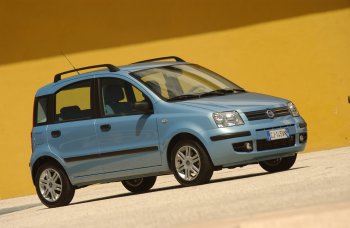
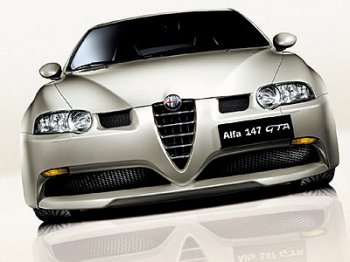
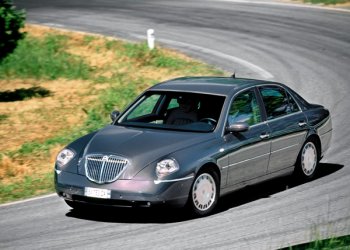
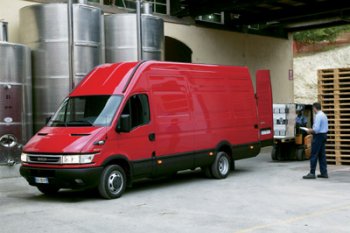
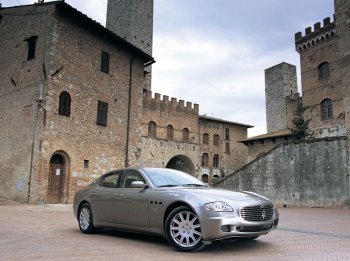
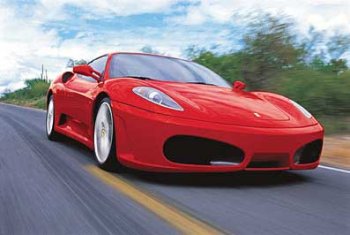
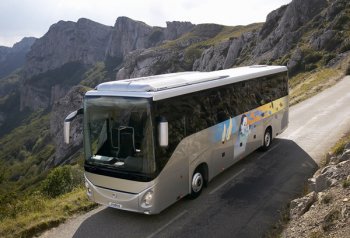
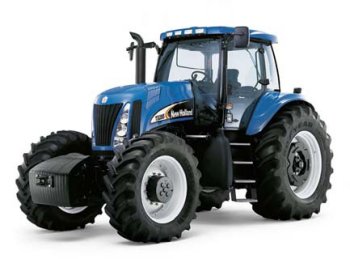 |
|
The Fiat Group today
produces a wide ranging and exciting array of
technically competent models, including (from top to
above) the Fiat Panda, Alfa Romeo 147 GTA, Lancia
Thesis, Iveco Daily, Maserati Quattroporte,
Ferrari F430, Iveco Irisbus and
the New Holland TG-series
agricultural tractor |
|
|
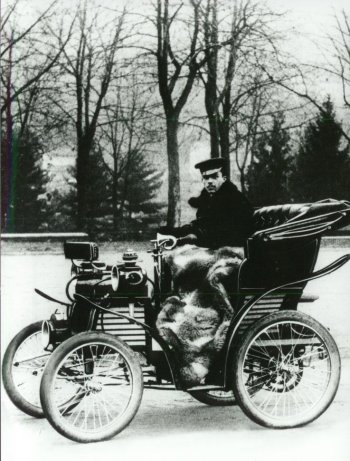
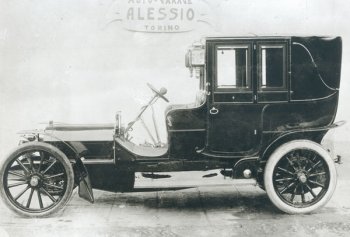
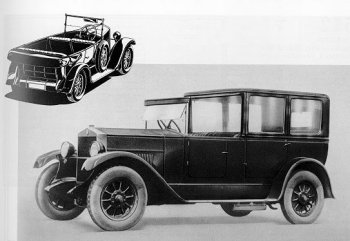
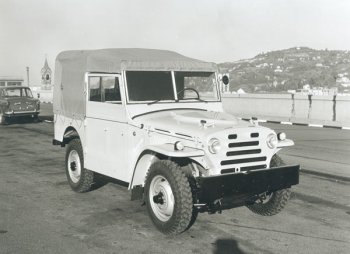
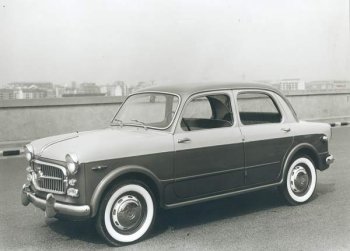 |
|
Important models from Fiat's 106 year history include (from
top to above) the Fiat 4hp (the marque's first model
built from 1899), 24-40hp, 507, Campagnola AR51 and
the Fiat 1100 |
|
|
2003 got off to a good start when the Company won the Truck
of the Year Award for its Stralis Active Space heavy truck
and reached the goal of 20 thousand vehicles produced in
only 24 months activity at Sete Lagoas in Brazil, Latin
America's most modern commercial vehicle plant. In an effort
to renew and expand its product range, the new Stralis
Active Day and Active Time heavy range models were presented
in April followed by the launch in May of the new EuroCargo
truck, a medium weight vehicle. Commercial vehicle
activities also include Irisbus (an Iveco Group company),
which is one of the leaders in European bus and coach
production.
Iveco is also committed to the production of
alternative-fuel vehicles. It can not only deploy a complete
range of methane-powered engines, but it is already
operating the prototype of a new hybrid bus produced by
Irisbus: the CityClass Fuel Cell, powered by hydrogen fuel
cells, a totally clean, highly advanced technology.
The Company operates in more than 100 countries by way of
joint ventures, licence agreements and equity investments.
It is particularly present in countries with a high growth
potential such as China and South America; in China through Naveco, a joint venture for the production of light
commercial vehicles (Daily), and CBC for the production of
buses, and in South America where it produces its full
range.
Magneti Marelli
Founded in 1919 by Fiat and the Ercole Marelli company, in
1967 Magneti Marelli was bought out entirely by the Fiat
Group that transformed it into a worldwide center for
automotive components. Magneti Marelli has recently
organized its various businesses into homogeneous groups,
the better to focus on its core activities. Consistent with
this strategy to reinforce the Sector by selecting and
strengthening its portfolio, in 2001 it acquired full
control of Automotive Lighting, a leader in motor vehicle
lighting, that set up as a joint venture with Bosch. Instead
in 2002 the non-core Spares Parts activities were divested.
Today Magneti Marelli Holding SpA operates the following
business lines: Lighting, Powertrain, Electronic systems,
Exhaust systems, Suspension systems, Shock absorbers,
Motorsport and Retail Service. Thanks to this selected range
of activities the Sector has become a global supplier with a
widespread production structure in Europe, North and South
America and Asia, which means it can guarantee absolutely
top-level components and systems to manufacturers throughout
the world.
Among Magneti Marelli's recent successes are the variable
beam lighting units, the hardware and software "heart" of
the new Multijet 1.3 16v engine, the patented Flecs
suspension system, the Dualogic gearbox and the
industrialisation of the Selespeed gearbox, and the SFS
twin-fuel engine control system. And last but not least, the
electronic control units installed on the Formula 1 World
Championship-winning Ferraris.
Comau
In 1978, Comau combined under a single corporate umbrella
the machine tool and production system activities that Fiat
and other companies in the Turin area had developed since
the beginning of the Thirties.
Over the years Comau has made important acquisitions to
strengthen its presence in its core business segments
(Bodywork, Mechanicals and Maintenance services). Fiat's
acquisition of Pico in 1999, (American market leader for
bodywork systems) and Comau's acquisition of Renault
Automation and Sciaky structurally reinforced the Sector's
presence on its principal markets and its position as a
supplier to the main automotive manufacturers. At the same
time business continued to grow in the area of maintenance
services for production plants, both as regards the Fiat
Group and other important automotive manufacturers.
Thanks in part to acquisitions Comau broadened its range of
services and products to become one of the few "global"
suppliers in the motor industry automation field. In fact
the Sector can guarantee customers a comprehensive service:
product and process engineering, production systems,
production start-up of machinery lines, and maintenance to
ensure the correct and constant operation of manufacturing
plants.
In line with a growth strategy focused on global
consolidation and broadening its range, Comau has set up
companies in Romania, Russia, South Africa, India, China and
Australia in addition to its offices in Europe, Nafta and
Mercosur.
Teksid
Teksid was founded in 1978, drawing together over 60 years
of experience accumulated by Fiat in the metallurgical
field, the origins of which stretched back to the early
1900s. From its founding until today the Company, which
operates in the field of metallurgical components for the
automotive industry, has grown to become one of the world
leaders in its field. The Sector works together with the
main European and American manufacturers in high technology
cast-iron and magnesium castings.
The Cast-iron Business Unit, which has plants in Italy,
France, Portugal, Poland, Brazil, Mexico and China, has an
annual production capacity of around 750,000 tonnes. It
produces cylinder blocks and heads, exhaust manifolds,
crankshafts, camshafts and components for cars and
commercial vehicles. With annual revenues of approximately
600 million dollars, Teksid's Cast-iron Business Unit is the
only operator in its sector to be ranked among the top 75
suppliers to the automotive industry.
The Magnesium Business Unit (the Meridian Technologies Inc.
subsidiary) is the world's leading manufacturer of
instrument panels, seat frames and other complex body
components. It has plants in the USA, Canada, the UK, Italy
and China and can boast a worldwide market share of over
35%.
Business Solutions
Business Solutions is the Fiat Group Sector operating in the
field of services to business through numerous companies,
subdivided into four areas of activity: - Human Resources:
outsourcing of administrative management of personnel,
training - Facility Management: management of property and
plant systems based on the most efficient solutions and
technologies. - Administration and Procurement: outsourcing
and consultancy to rationalise administrative processes,
services in the fields of motoring, non-industrial risk
prevention, customs sector and administrative procedures for
listed companies. Services and consultancy for procurement
processes: on-line auctions, marketplace and centralised
purchasing. - Information & Communication Technology:
technological services and solutions for outsourcing
information systems, development of eBusiness solutions and
telecommunications.
Set up in 2000 after a process of insourcing various
activities, today Business Solutions offers companies a
wide, comprehensive and diversified range of services and
consultancy.
In line with strategies developed by the Fiat Group in 2003,
Business Solutions has focused its activity on the captive
market, reformulating its field of action. As a result the
Sector sold TeleClient to Acroservizi, a company operating
in the fields of call centre management, banking and
insurance services and telemarketing. 70% of Fiat
Engineering was sold to Maire Holding. An agreement was also
reached with Risanamento Spa, part of the Zunino Group, for
the divestment of a number of properties and investments in
property companies, among which an approximately 56% share
in Ipi Spa.
Itedi
Fiat entered publishing in 1926 when the Group set up
Editrice La Stampa for the publishing of the Turin-based
newspaper, "La Stampa" (founded in 1867). 1980 marked the
founding of Itedi, Italiana Edizioni S.p.a., that absorbed
all of Fiat's publishing and communication activities.
The Company operates through Editrice La Stampa S.p.a.and,
as regards sale of advertising space, through Publikompass
S.p.a. Currently "La Stampa" sells around 360 thousand
copies a day and is present on the Internet at
www.lastampa.it with its own dedicated editorial staff. The
newspaper is edited in Turin and printed at six different
printing works in Italy and abroad, one of which is owned by
La Stampa. The central editorial staff in Turin is flanked
by correspondent offices in Rome, Milan, New York, Moscow,
Paris, London, Berlin and Brussels. There are also branch
offices in the provincial capitals in Italy's Piedmont,
Liguria and Valle d'Aosta regions.
Successful results have been achieved in recent years thanks
to a number of initiatives launched to increase distribution
of the newspaper and improve the quality of the product, as
well as measures to broaden the readership base
(competitions in schools and distribution to professional
associations).
September 2003 marked the first issue of an improved version
of the newspaper's magazine "Specchio", that now has a new
format and more pages.
Publikompass is the advertising agent for 25 daily
newspapers, 13 magazines, 6 local TV stations, 2 satellite
thematic channels, 1 music television, 5 radio stations and
23 websites, maintaining contacts with more than one hundred
thousand customers. The head office is in Milan and
coordinates the activities of 54 branches and offices
throughout Italy. Publikompass is Italy's leading
non-captive space broker in terms of revenues. It is leader
in the daily newspaper segment and can boast a significant
presence as far as magazines and new televisions are
concerned.
Research and Training
Centro Ricerche Fiat S.C.p.A. Performs research into
engines, vehicles, electronic systems, manufacturing
processes and technical-managerial methodologies.
Elasis S.C.p.A. An automotive engineering research
and development company active in Southern Italy and one of
the important companies in Europe as regards advanced
engineering in the automobile sector.
Isvor Fiat S.p.A. Operates at various levels in the
fields of training and managerial and
technical consultancy.
Fiat Geva S.p.A. Administration of central treasury
services and financial assistance to Group companies
Fiat Information & Communication Services S.r.l.
Communications activities and services.
Fiat Historical Center and Archive Manages the Fiat
Historical Center which conserves the collection of
historical Fiat cars and houses the Historical Archive.
Fiat Revi S.c.r.l. Activities and services related
and instrumental to accounting, to the activation of
internal control systems and to procedures to verify their
operation.
Fiat Servizi per l'industria S.p.A Supplies auxiliary
services for the management, selection and enhancement of
human resources, health service, systems, purchasing.
Sisport Fiat S.p.A. Promotes and organizes sports
activities and manages recreational facilities.
Fondazione Giovanni Agnelli In 1966 Giovanni Agnelli
promoted the creation of a cultural and research foundation
to commemorate the birth centenary of his grandfather,
Senator Giovanni Agnelli. In December that same year Fiat
and IFI established the Giovanni Agnelli Foundation, an
independent cultural and research institute for human and
social sciences.
It is a non-profit organisation and its Articles of
Association assign it the task of "investigating and
disseminating knowledge of the conditions on which Italy's
progress in the economic, scientific, social and cultural
field depends", as well as operating in support of
scientific research. This is an "operating-type" foundation
that promotes and carries out research, organises seminars
and conventions and publishes the results of its studies in
volumes under the banner Edizioni della Fondazione Giovanni
Agnelli. The Foundation participates in the Italian and
European cultural debate to contribute to a better
understanding of social and cultural change.
|
|
|
|
![]()
![]()